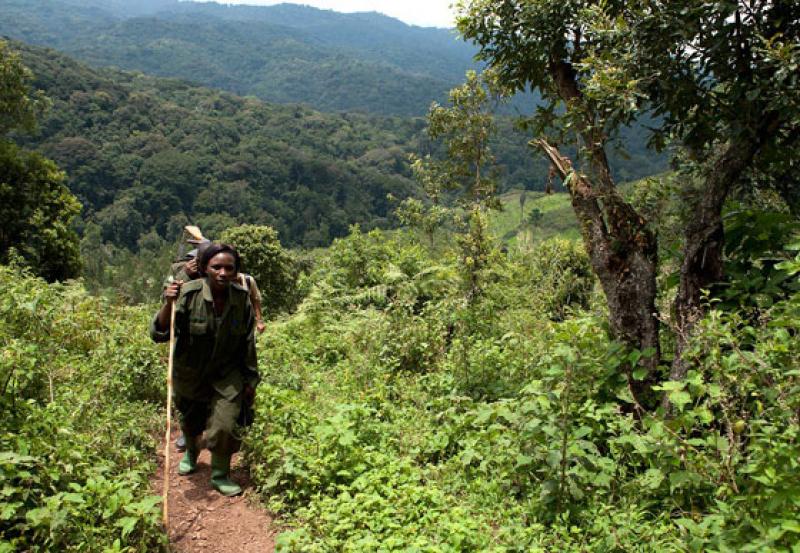
Gorilla Trekking in Uganda
By Sean Mahon
The Bwindi Impenetrable Forest is the one of just three places you can see a critically endangered population of mountain gorillas; a subspecies of the eastern gorilla. Just over half live in the Virunga Mountains, a range of extinct volcanoes that offer a border between Democratic Republic of Congo, Rwanda and Uganda, while the rest reside in the national park. Since the discovery of the mountain gorilla subspecies in 1902, its population has suffered; hunting, habitat destruction and disease were so widespread that it was once thought the species might be consigned to extinction by the end of the 20th Century. Luckily, conservation efforts have helped to save this intelligent and intriguing species.
Bwindi Impenetrable National park is situated in the South West of Uganda, on the edge of the Western Rift valley (Albertine rift) and is shared by Kanungu, Kabale and Kisoro districts. A little over 300sq kilometres in size, its altitudes range from 1,000 metres at Ishasha gorge to in excess of 2,500 metres at Rwamanyonyi Peak. This ancient rainforest is the home to mountain gorillas and is a well-established trekker’s path; the park is often considered the most visited within the country offering tempered weather, the coolest being between June and July. Bwindi is home to not only some 300 plus gorillas, but close to 350 species of birds and over 200 species of butterfly, ensuring that any trekking adventure will be filled with fascinating sights.
Trekking Experience
Once you land in Entebbe, a major town of central Uganda, you will be excited to quickly move on to the reason that has bought to this landlocked nation; the gorillas. Gorilla trekking is conducted either in Mgahinga National Park or the vastly more popular Bwindi; before embarking on a trekking trip, visitors must first secure a Gorilla Permit, the majority of which are sold are for the Bwindi forest largely to a history of more consistent sightings. A permit costs $600 and on a typical day, approximately 70 visitors delve into the heart of Bwindi, though only eight people are permitted to see each gorilla family. (It is strongly encouraged to arrange a permit through a reputable safari agent as the most common mistake is to choose a gorilla family that is far away from your accommodation.)
The routes through Bwindi are often tricky; this is a remote area so appropriate clothing and good hiking boots are a must. The gorillas are tracked daily by trained guides who note where they rest for the night. Tracking begins early; your first destination is the gorilla nests, which may involve long walks around densely forested hills and along dew-drenched pathways. Your guide will follow the gorilla’s daily movements and lead you to their camp; as you approach these incredible creatures, your guide will ‘coach’ you in the correct mannerisms and vocal sounds in order to communicate with the gorillas that you mean them no harm.
As you final approach the gorillas, your guide will remind you of how to speak and move; silverbacks are usually peaceful, though if threatened they may scream loudly. Naturally inquisitive, the gorillas may move close to you, though it is extremely unlikely they will cause you harm. As you lock eyes with man’s closest relative you will realise you are experiencing one of the most exhilarating and emotional wildlife encounters of your life.
Share this article:




















